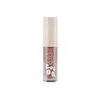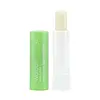What's inside
What's inside
 Key Ingredients
Key Ingredients

 Benefits
Benefits

 Concerns
Concerns

 Ingredients Side-by-side
Ingredients Side-by-side

Polybutene
Hydrogenated Polyisobutene
EmollientDiisostearyl Malate
EmollientOctyldodecanol
EmollientCera Alba
EmollientPhenyl Trimethicone
Skin ConditioningCyclopentasiloxane
EmollientDextrin Palmitate
EmulsifyingPentaerythrityl Tetraisostearate
EmollientPolyglyceryl-2 Triisostearate
EmulsifyingAscorbyl Tetraisopalmitate
AntioxidantCopernicia Cerifera Wax
Ethylhexyl Methoxycinnamate
UV AbsorberSynthetic Fluorphlogopite
Pyrus Malus Seed Oil
EmollientPhenoxyethanol
PreservativeEthylhexylglycerin
Skin ConditioningPolyhydroxystearic Acid
EmulsifyingTocopheryl Acetate
AntioxidantParfum
MaskingCyclotetrasiloxane
EmollientAluminum Hydroxide
EmollientTriethoxycaprylylsilane
Tocopherol
AntioxidantCI 77891
Cosmetic ColorantCI 77491
Cosmetic ColorantCI 77492
Cosmetic ColorantCI 77499
Cosmetic ColorantCI 15850
Cosmetic ColorantCI 45410
Cosmetic ColorantMica
Cosmetic ColorantPolybutene, Hydrogenated Polyisobutene, Diisostearyl Malate, Octyldodecanol, Cera Alba, Phenyl Trimethicone, Cyclopentasiloxane, Dextrin Palmitate, Pentaerythrityl Tetraisostearate, Polyglyceryl-2 Triisostearate, Ascorbyl Tetraisopalmitate, Copernicia Cerifera Wax, Ethylhexyl Methoxycinnamate, Synthetic Fluorphlogopite, Pyrus Malus Seed Oil, Phenoxyethanol, Ethylhexylglycerin, Polyhydroxystearic Acid, Tocopheryl Acetate, Parfum, Cyclotetrasiloxane, Aluminum Hydroxide, Triethoxycaprylylsilane, Tocopherol, CI 77891, CI 77491, CI 77492, CI 77499, CI 15850, CI 45410, Mica
Ricinus Communis Seed Oil
MaskingPetrolatum
EmollientC12-15 Alkyl Benzoate
AntimicrobialOlea Europaea Fruit Oil
MaskingBis-Diglyceryl Polyacyladipate-2
EmollientEthylhexyl Methoxycinnamate
UV AbsorberPolyethylene
AbrasiveButyl Methoxydibenzoylmethane
UV AbsorberDi-C20-40 Alkyl Dimer Dilinoleate
Skin ConditioningMicrocrystalline Wax
Emulsion StabilisingButyrospermum Parkii Butter
Skin ConditioningMacadamia Ternifolia Seed Oil
EmollientC10-30 Cholesterol/Lanosterol Esters
EmulsifyingZinc Oxide
Cosmetic ColorantPhenoxyethanol
PreservativeSimmondsia Chinensis Seed Oil
EmollientParfum
MaskingTocopheryl Acetate
AntioxidantEthylhexylglycerin
Skin Conditioning1,2-Hexanediol
Skin ConditioningCaprylyl Glycol
EmollientAllantoin
Skin ConditioningGlycine Soja Oil
EmollientBHT
AntioxidantPersea Gratissima Oil
Skin ConditioningCamellia Sinensis Leaf
PerfumingTriethoxycaprylylsilane
Water
Skin ConditioningBisabolol
MaskingIsobornyl Acetate
MaskingCalendula Officinalis Flower Extract
MaskingChamomilla Recutita Flower Extract
MaskingFucus Vesiculosus Extract
EmollientTriticum Vulgare Bran Extract
Skin ConditioningLinoleic Acid
CleansingPotassium Sorbate
PreservativeSodium Benzoate
MaskingTocopherol
AntioxidantCitric Acid
BufferingRicinus Communis Seed Oil, Petrolatum, C12-15 Alkyl Benzoate, Olea Europaea Fruit Oil, Bis-Diglyceryl Polyacyladipate-2, Ethylhexyl Methoxycinnamate, Polyethylene, Butyl Methoxydibenzoylmethane, Di-C20-40 Alkyl Dimer Dilinoleate, Microcrystalline Wax, Butyrospermum Parkii Butter, Macadamia Ternifolia Seed Oil, C10-30 Cholesterol/Lanosterol Esters, Zinc Oxide, Phenoxyethanol, Simmondsia Chinensis Seed Oil, Parfum, Tocopheryl Acetate, Ethylhexylglycerin, 1,2-Hexanediol, Caprylyl Glycol, Allantoin, Glycine Soja Oil, BHT, Persea Gratissima Oil, Camellia Sinensis Leaf, Triethoxycaprylylsilane, Water, Bisabolol, Isobornyl Acetate, Calendula Officinalis Flower Extract, Chamomilla Recutita Flower Extract, Fucus Vesiculosus Extract, Triticum Vulgare Bran Extract, Linoleic Acid, Potassium Sorbate, Sodium Benzoate, Tocopherol, Citric Acid
Ingredients Explained
These ingredients are found in both products.
Ingredients higher up in an ingredient list are typically present in a larger amount.
Ethylhexyl Methoxycinnamate is an organic compound that provides UVB protection. It often goes by the more common name of octinoxate. It is created from methoxycinnamic acid and 2-ethylhexanol.
Ethylhexyl Methoxycinnamate absorbs UVB rays with wavelengths between 280-320 nm. UV absorbers protect your skin by using chemical reactions to convert UV rays into heat and energy.
UVB (290-320 nm) rays emit more energy than UVA rays. They are capable of damaging DNA, causing sunburns and are thought to be linked to skin cancer.
The state of Hawaii has banned sunscreens containing octinoxate due to its potential impact on coral reefs. More research is needed to bridge gaps in this research. The European Union allows higher levels of octinoxate in sunscreens than the US and Australia.
Ethylhexyl Methoxycinnamate is oil soluble. It is not stable and may lose efficacy when exposed to sunlight.
Learn more about Ethylhexyl MethoxycinnamateEthylhexylglycerin (we can't pronounce this either) is commonly used as a preservative and skin softener. It is derived from glyceryl.
You might see Ethylhexylglycerin often paired with other preservatives such as phenoxyethanol. Ethylhexylglycerin has been found to increase the effectiveness of these other preservatives.
Parfum is a catch-all term for an ingredient or more that is used to give a scent to products.
Also called "fragrance", this ingredient can be a blend of hundreds of chemicals or plant oils. This means every product with "fragrance" or "parfum" in the ingredients list is a different mixture.
For instance, Habanolide is a proprietary trade name for a specific aroma chemical. When used as a fragrance ingredient in cosmetics, most aroma chemicals fall under the broad labeling category of “FRAGRANCE” or “PARFUM” according to EU and US regulations.
The term 'parfum' or 'fragrance' is not regulated in many countries. In many cases, it is up to the brand to define this term.
For instance, many brands choose to label themselves as "fragrance-free" because they are not using synthetic fragrances. However, their products may still contain ingredients such as essential oils that are considered a fragrance by INCI standards.
One example is Calendula flower extract. Calendula is an essential oil that still imparts a scent or 'fragrance'.
Depending on the blend, the ingredients in the mixture can cause allergies and sensitivities on the skin. Some ingredients that are known EU allergens include linalool and citronellol.
Parfum can also be used to mask or cover an unpleasant scent.
The bottom line is: not all fragrances/parfum/ingredients are created equally. If you are worried about fragrances, we recommend taking a closer look at an ingredient. And of course, we always recommend speaking with a professional.
Learn more about ParfumPhenoxyethanol is a preservative that has germicide, antimicrobial, and aromatic properties. Studies show that phenoxyethanol can prevent microbial growth. By itself, it has a scent that is similar to that of a rose.
It's often used in formulations along with Caprylyl Glycol to preserve the shelf life of products.
Tocopherol (also known as Vitamin E) is a common antioxidant used to help protect the skin from free-radicals and strengthen the skin barrier. It's also fat soluble - this means our skin is great at absorbing it.
Vitamin E also helps keep your natural skin lipids healthy. Your lipid skin barrier naturally consists of lipids, ceramides, and fatty acids. Vitamin E offers extra protection for your skin’s lipid barrier, keeping your skin healthy and nourished.
Another benefit is a bit of UV protection. Vitamin E helps reduce the damage caused by UVB rays. (It should not replace your sunscreen). Combining it with Vitamin C can decrease sunburned cells and hyperpigmentation after UV exposure.
You might have noticed Vitamin E + C often paired together. This is because it is great at stabilizing Vitamin C. Using the two together helps increase the effectiveness of both ingredients.
There are often claims that Vitamin E can reduce/prevent scarring, but these claims haven't been confirmed by scientific research.
Learn more about TocopherolTocopheryl Acetate is AKA Vitamin E. It is an antioxidant and protects your skin from free radicals. Free radicals damage the skin by breaking down collagen.
One study found using Tocopheryl Acetate with Vitamin C decreased the number of sunburned cells.
Tocopheryl Acetate is commonly found in both skincare and dietary supplements.
Learn more about Tocopheryl AcetateTriethoxycaprylylsilane is a silicone used to bind and stabilize ingredients.
As an emulsifier, it helps prevent ingredients from separating. This can help elongate the shelf life of products.
Triethoxycaprylylsilane is often used to coat mineral sunscreens ingredients to help give a better feel. It also helps reduce oxidative stress in sunscreens.
Learn more about Triethoxycaprylylsilane